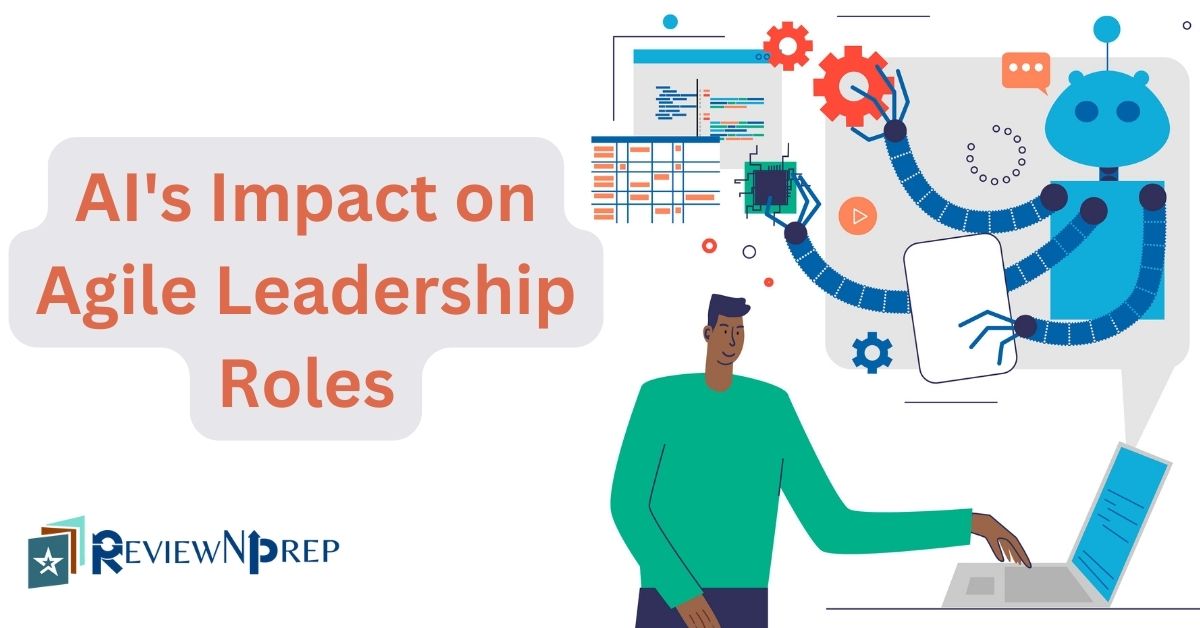|
|
In the ever-evolving landscape of technology and business, the integration of Artificial Intelligence (AI) has sparked debates about its potential to revolutionize various industries. One such area of discussion revolves around the roles of Product Owners and Scrum Masters in Agile software development teams.
These pivotal roles are essential for guiding teams through the iterative development process and ensuring the delivery of valuable products. But can AI replace the human touch and expertise these roles provide?
In this blog post, we’ll explore the possibility of AI replacing Scrum Masters and Product Owners, and we’ll discuss the implications of this for agile teams.
Could AI Teach Scrum?
AI tutors are already being used and developed to teach certain technical skills like coding and math. Companies like Anthropic, OpenAI are creating more advanced AI assistants that can have natural conversations and explain concepts.
Effective teaching often requires understanding student difficulties, providing motivation, using real-world examples, and adjusting approaches based on feedback. Current AI is limited in these areas of emotional intelligence and personalization.
AI teaching is often focused on very narrow skills/content and struggles to connect ideas across domains the way human teachers do. Scrum relies on broad conceptual understanding that could be difficult for AI.
AI could potentially be used to teach some aspects of scrum that are more factual or rules-based, like explaining the different meetings, artifacts, and roles. Dynamic question answering could allow learners to get clarification. Since scrum is intended to be adaptable to different teams and contexts, an AI teacher may be too rigid and prescription-based compared to the guidance of a human certified scrum master.
Could AI Replace Scrum Masters?
Let’s first talk about the role of Scrum Masters and how do they help the development team.
What are Scrum Masters responsible for?
The Scrum Master serves as a facilitator, coach, and servant leader for the Scrum Team. Their primary responsibility is to ensure that the team follows the Scrum framework and adheres to its principles and practices. They facilitate Scrum events such as Sprint Planning, Daily Standups, Sprint Reviews, and Retrospectives, ensuring they are effective and productive.
The Scrum Master also shields the team from external distractions and impediments, enabling them to focus on delivering value. They foster a culture of continuous improvement within the team, encouraging self-organization and cross-functionality.
Additionally, the Scrum Master acts as a bridge between the team and the Product Owner, facilitating communication and collaboration to ensure alignment with the product vision and goals. Overall, the Scrum Master plays a crucial role in helping the team maximize its potential and deliver high-quality products iteratively and incrementally.
AI vs Scrum Master
It’s hard to predict the GenAI future, but at the time of writing this blog AI is not human enough to replace Scrum Master. Scrum Masters are also able to adapt to changing circumstances and make decisions that are in the best interests of the team. AI is not capable enough to read body language and make decisions based on that. Scrum Masters on the other hand can read the room and suggest recommendations based on that or facilitate conversations according to the temperature of the room.
By leveraging AI’s capabilities, Scrum teams can streamline processes, enhance decision-making, and achieve continuous improvement, leading to increased productivity and project success.
How Can AI Help Scrum Masters?
AI could potentially automate some of the tasks that Scrum Masters perform, such as:
- Scheduling meetings
- Tracking progress
- Managing the backlog
- Facilitating retrospectives
In summary, AI could reinforce textbook scrum master knowledge but may lack the insight and adaptability to teach holistic leadership of agile teams. A human teacher able to make judgment calls and form interpersonal bonds is still ideal for this soft skill. Though AI capabilities continue advancing rapidly, right now it cannot provide the same level of human support and guidance that Scrum Masters can.
Could AI Replace Product Owners?
Let’s first talk about the role of Product Owners and how do they help the business and development teams.
What are Product Owners responsible for?
The Product Owner is responsible for maximizing the value of the product and the work of the development team. Their primary role involves defining and prioritizing the product backlog, ensuring it reflects stakeholder needs and aligns with the overall product vision and goals.
Product Owners collaborate closely with stakeholders to gather requirements, provide clarifications, and make decisions on product features and enhancements. The Product Owner is accountable for conveying the product vision to the development team, ensuring they have a clear understanding of what needs to be built and why.
Throughout the development process, Product Owners continuously prioritize and refine the backlog, making trade-off decisions based on value, risk, and feedback. Ultimately, the PO is the voice of the customer, advocating for their needs and balancing competing interests to deliver a successful product.
AI vs Product Owner
One area where AI shows promise is in data-driven decision-making. AI algorithms can analyze vast amounts of data, such as user feedback, market trends, and performance metrics, to inform product decisions and backlog prioritization. Machine learning models can identify patterns and correlations that humans might overlook, potentially leading to more effective product strategies.
However, replacing product owners entirely with AI is likely not feasible or advisable in the near future. Here are some key considerations:
- A key responsibility of product owners is understanding user needs and setting the product vision and priorities. Current AI has limited capability for the creative, subjective aspects of this. It would struggle to interpret ambiguous, context-specific feedback from users that product owners use to make judgment calls.
- AI could potentially help analyze usage data to surface trends and patterns product owners could use to help inform priorities. But the AI would lack the intuition and emotional connection to customers that strong human product owners have.
- Communication, persuasion and collaboration are big parts of the product owner role. Working with teams, stakeholders, and customers requires relationship building and soft skills AI currently does not possess. Humans still significantly outperform AI in this regard.
- Simple productivity tasks like grooming and maintaining the product backlog, documenting requirements, checking progress toward goals, etc could all be augmented by AI support over time. But strategic high-level ownership would still rest with a human.
- Furthermore, ethical considerations surrounding AI in decision-making processes cannot be overlooked. AI algorithms are only as unbiased as the data they are trained on, raising concerns about algorithmic bias and fairness, especially in diverse and inclusive product development environments.
In essence, the creative, social, and subjective aspects of product ownership as well as high-level leadership seem to necessitate a human in the role.
How Can AI Help Product Owners?
There are many repetitive and analytical tasks that AI could help automate to complement human strengths. A hybrid model with both Product Owner and AI capabilities would likely emerge over a full replacement with AI alone. AI could potentially automate some of the tasks that Product Owners perform, such as:
- Gathering requirements
- Prioritizing the backlog
- Managing the product roadmap
Conclusion
In conclusion, while AI has the potential to augment certain aspects of the Product Owner and Scrum Master roles, it is unlikely to replace them entirely. Human judgment, empathy, and creativity remain indispensable in Agile development. If AI were to replace Scrum Masters and Product Owners, it would have a significant impact on agile teams. Teams would need to find new ways to facilitate their work and to define the product vision and roadmap.
So, instead of viewing AI as a substitute, Agile teams should leverage it as a tool to enhance collaboration, streamline processes, and make more informed decisions. By embracing the strengths of both humans and machines, organizations can unlock new possibilities for innovation and value delivery in Agile software development.
I’ll end by saying that it is too early to say whether AI will eventually replace the roles of Scrum Master and Product Owner. However, it is clear that AI is rapidly changing the world of work, and agile teams need to be prepared for the possibility that AI could impact their roles in the future.
Further Reading:
6 Proven Strategies for Becoming a Highly Effective Product Owner
Choosing the Right Path: Project Management or Scrum Master?

